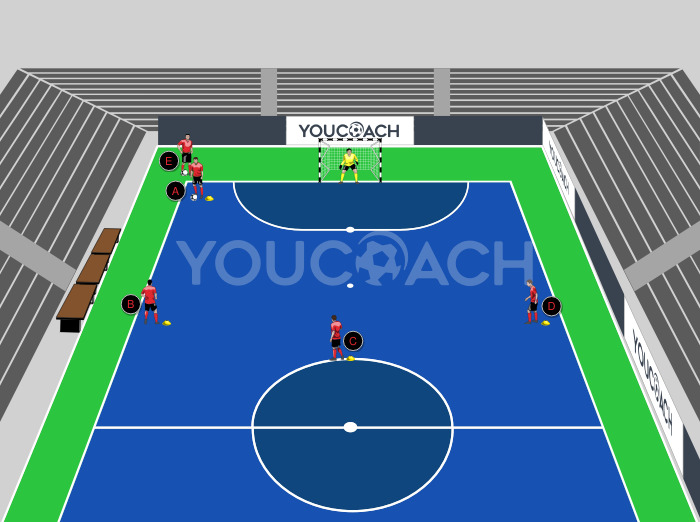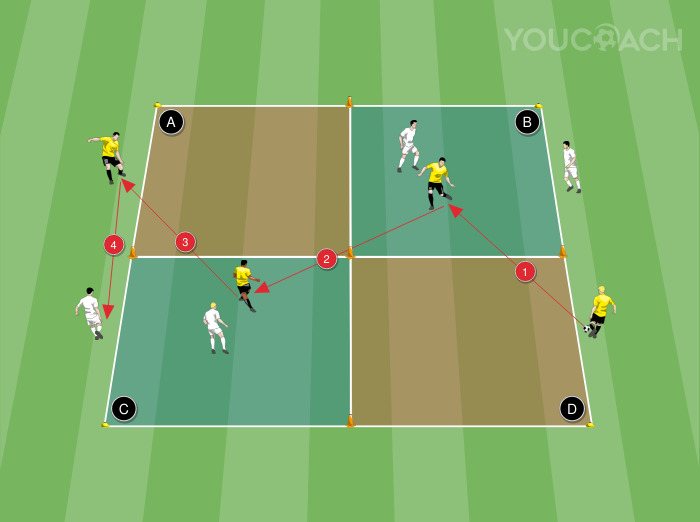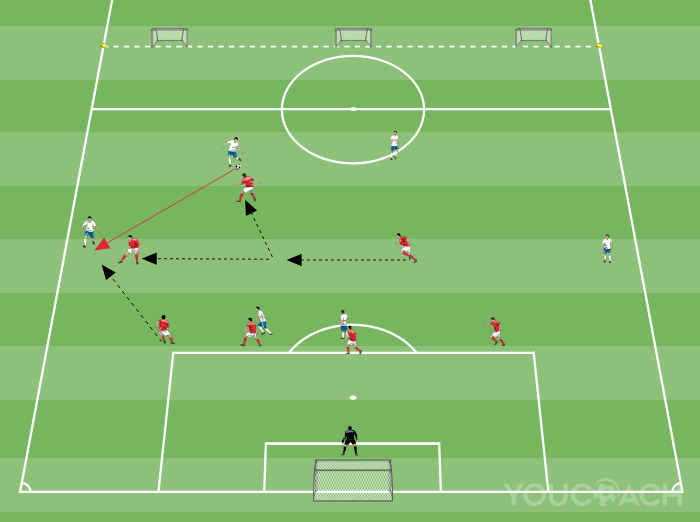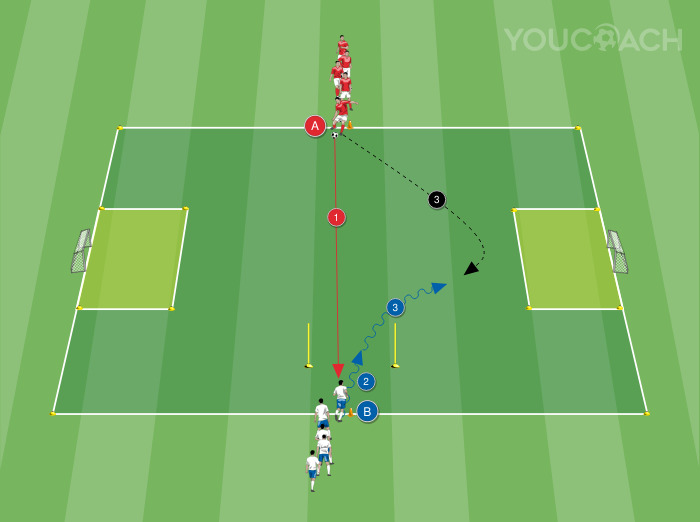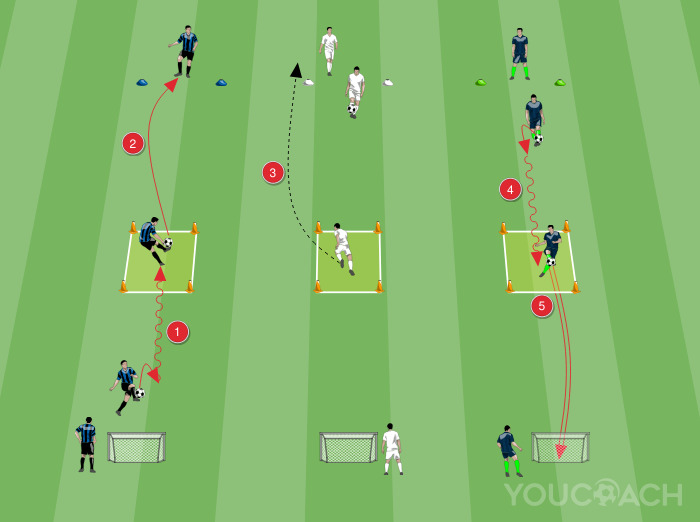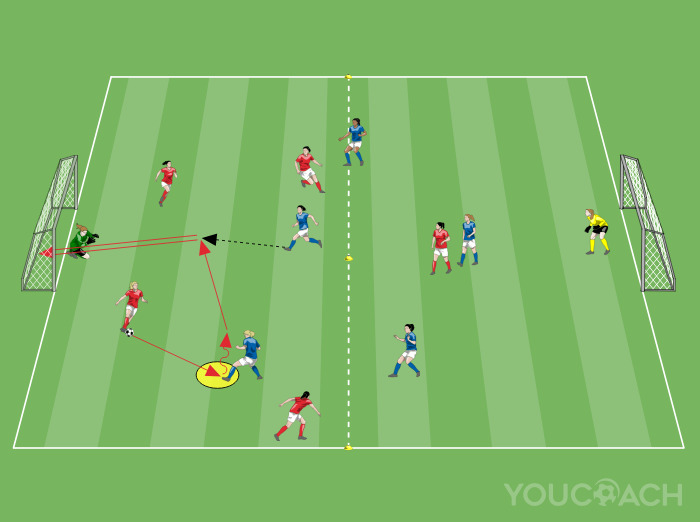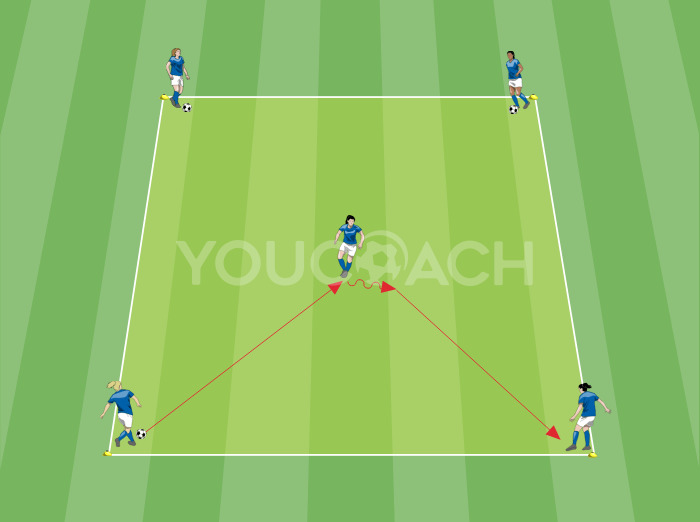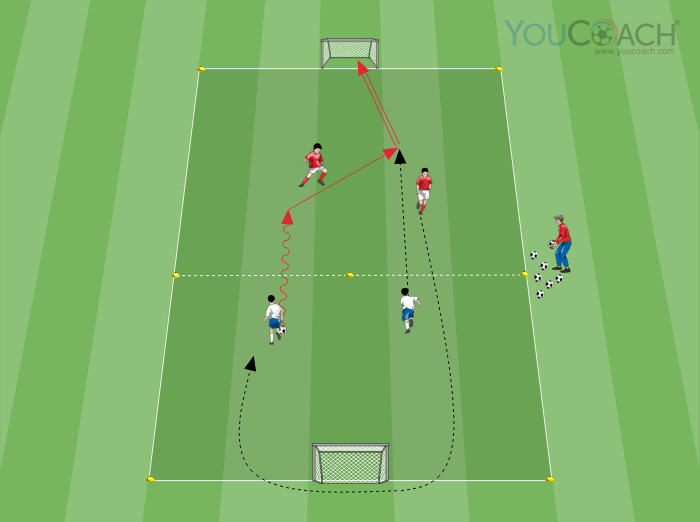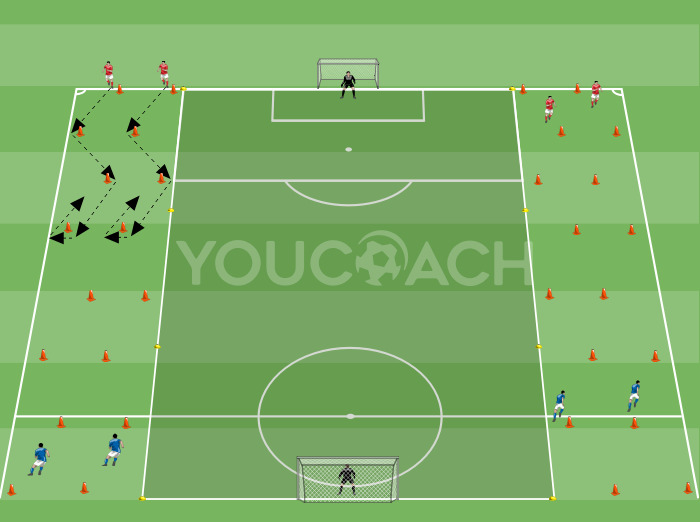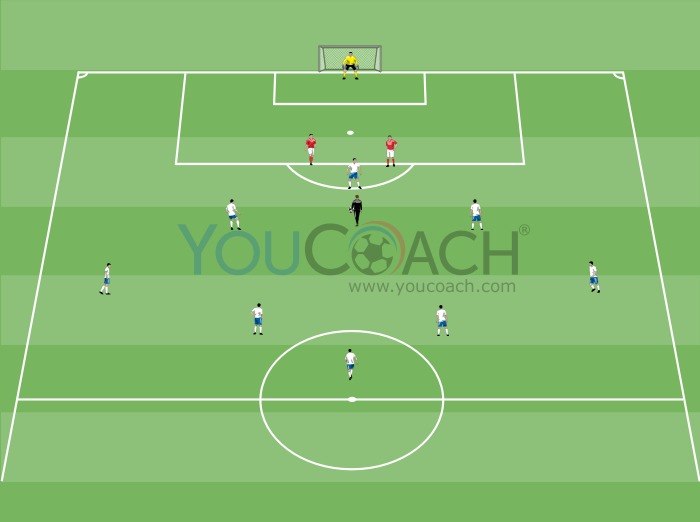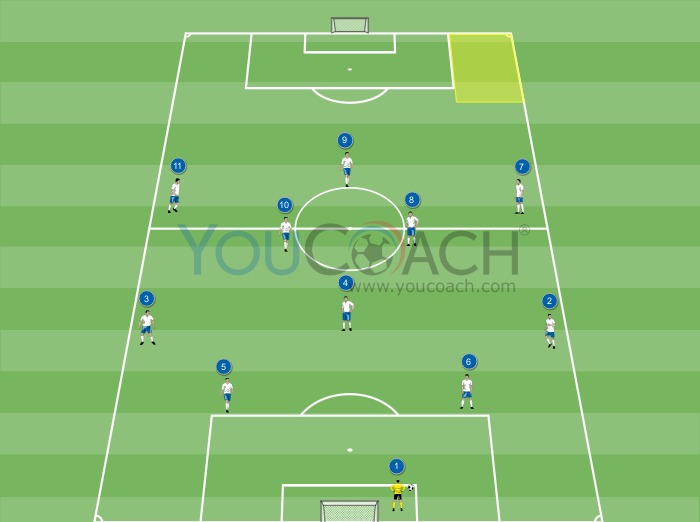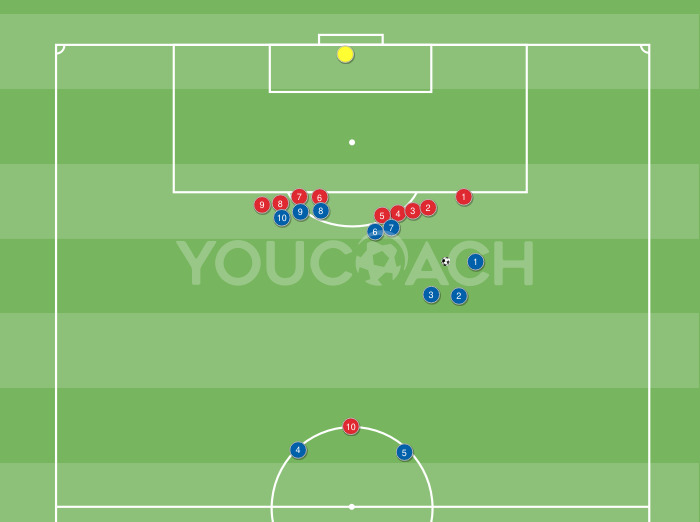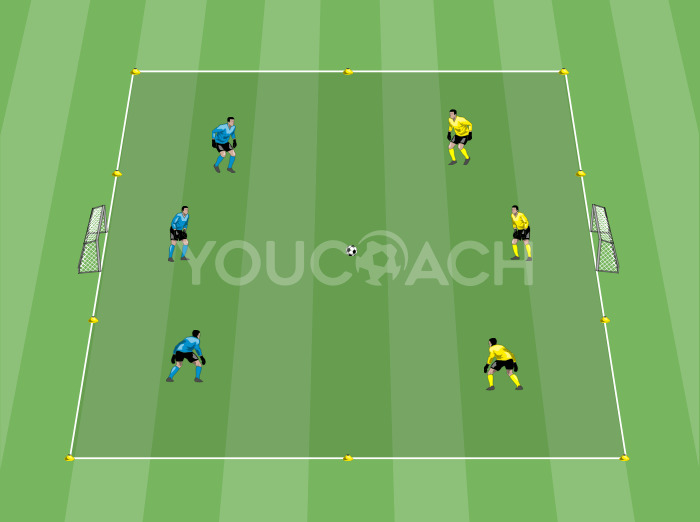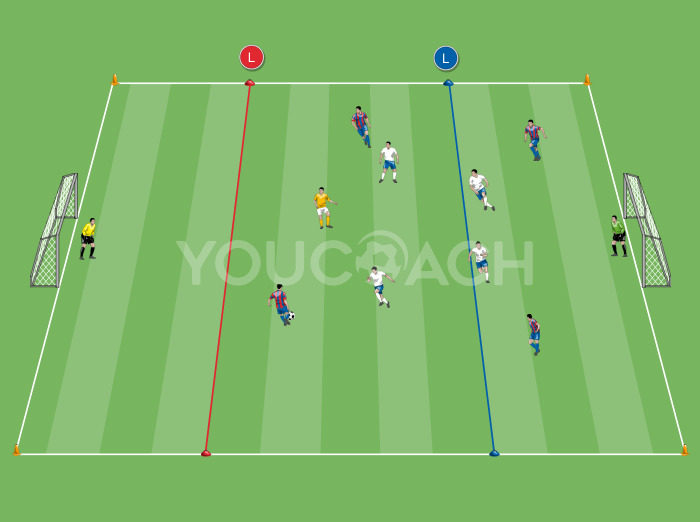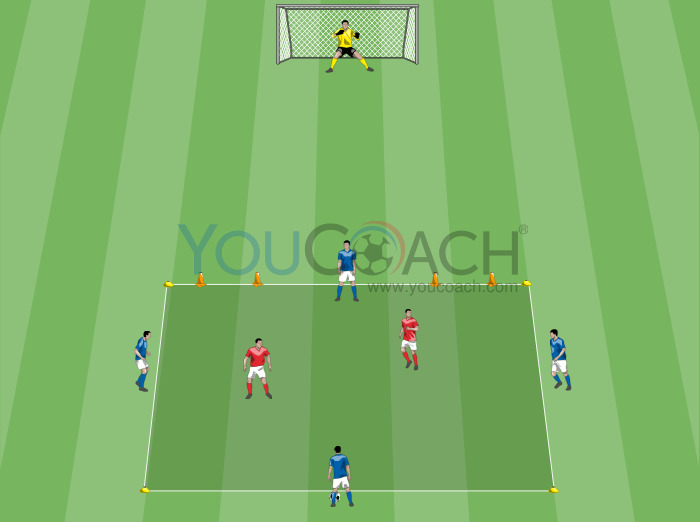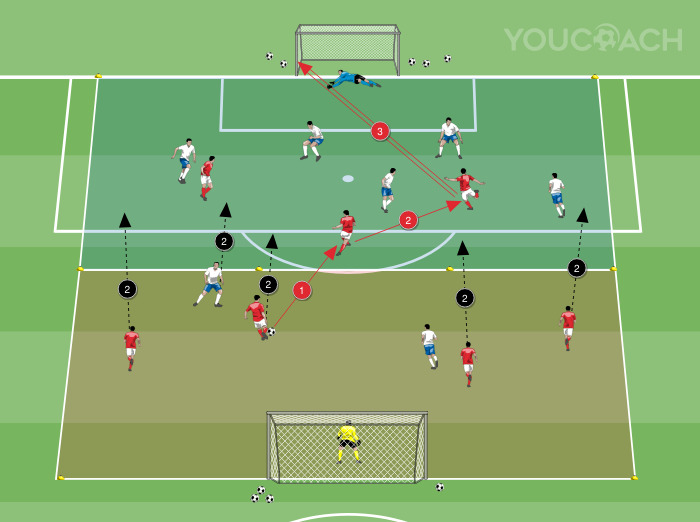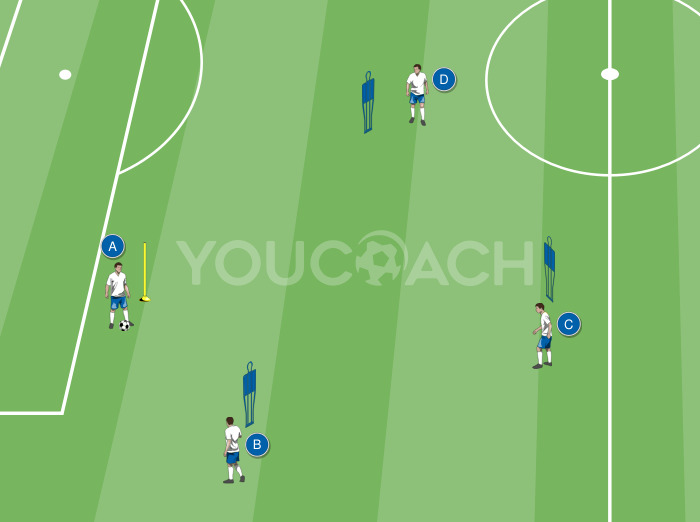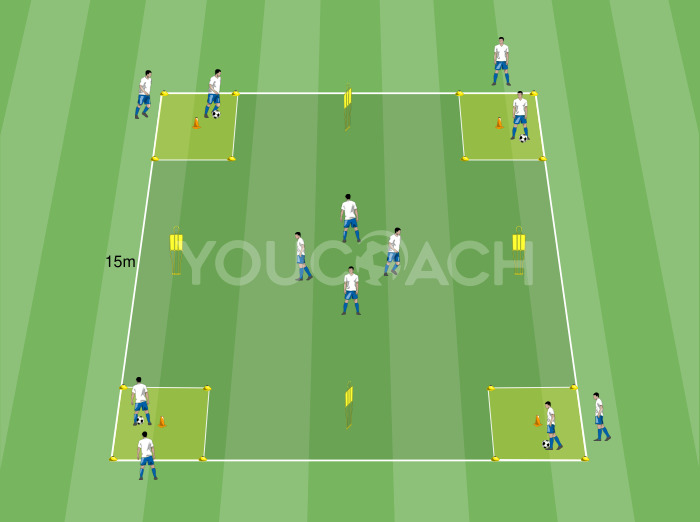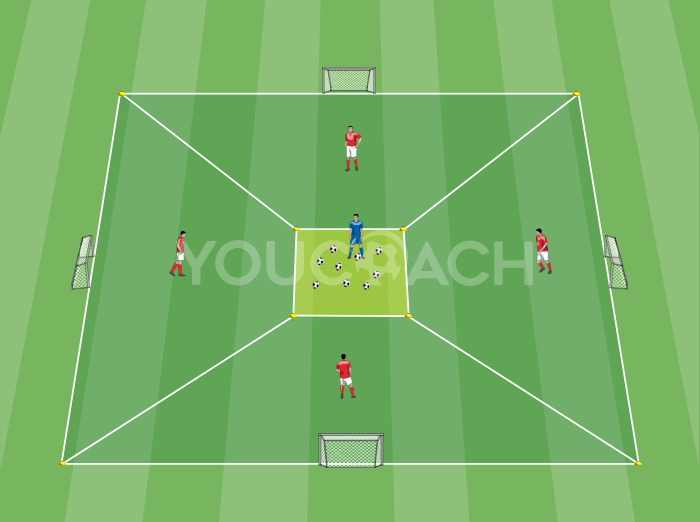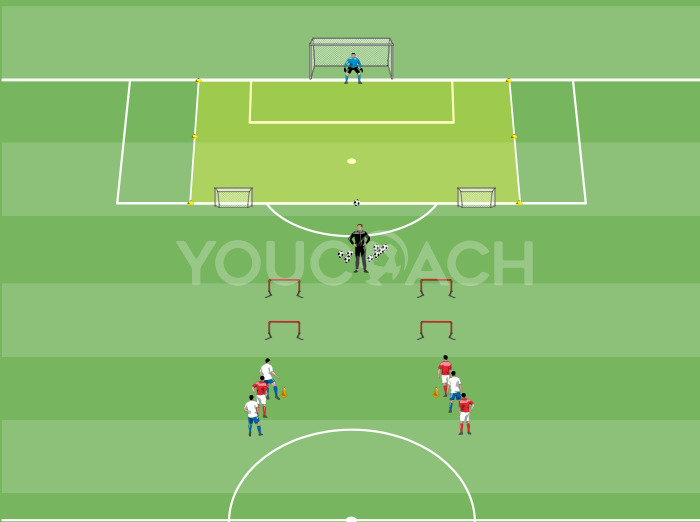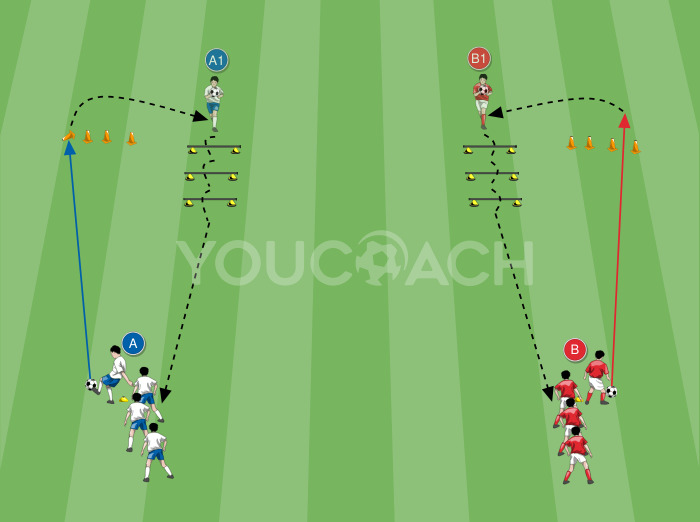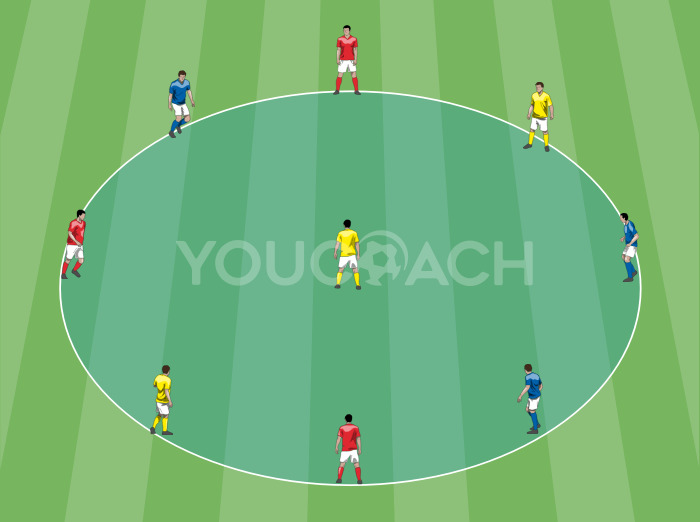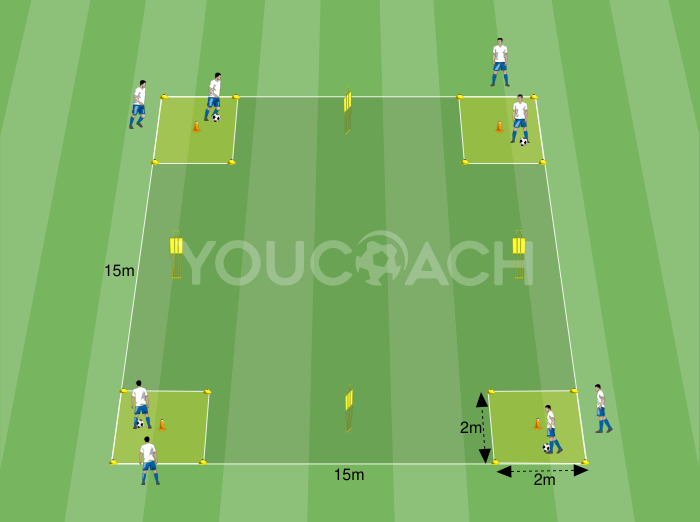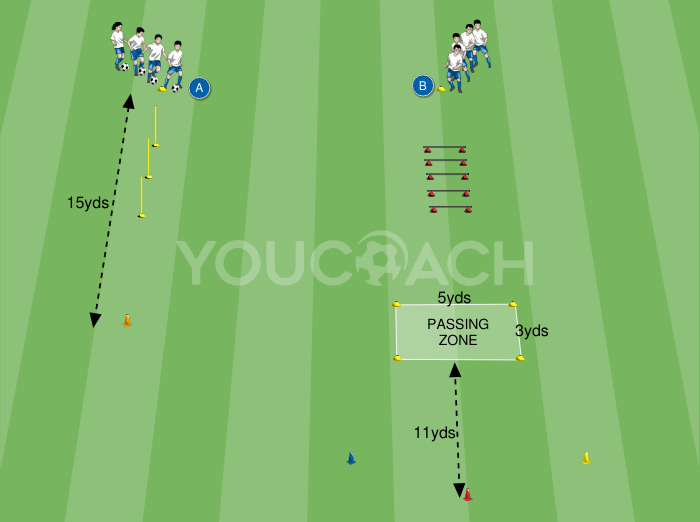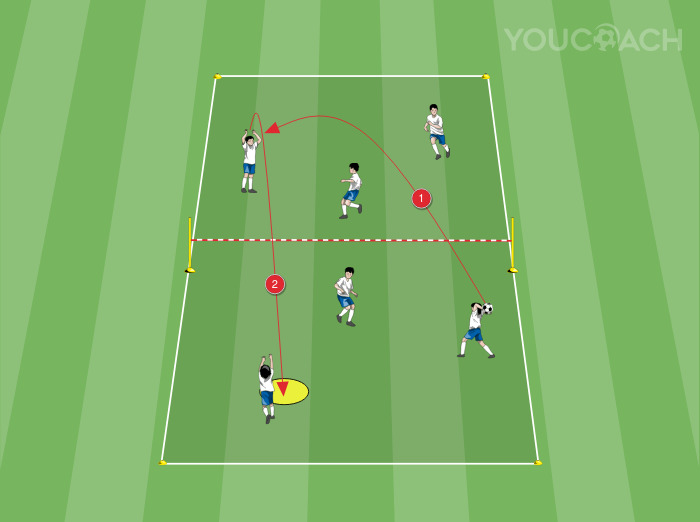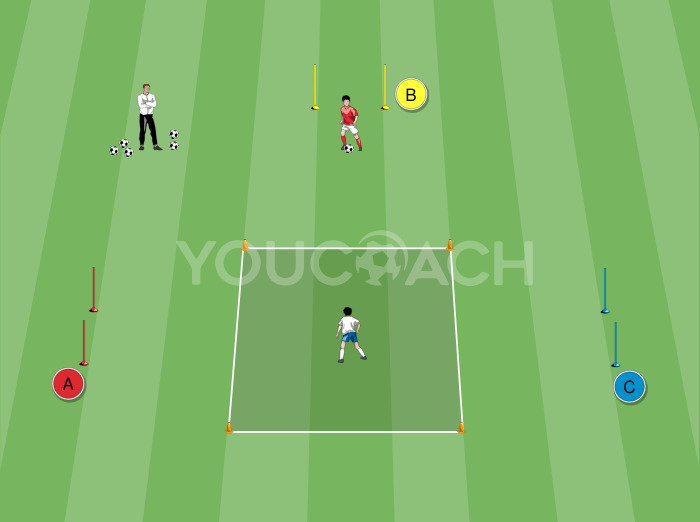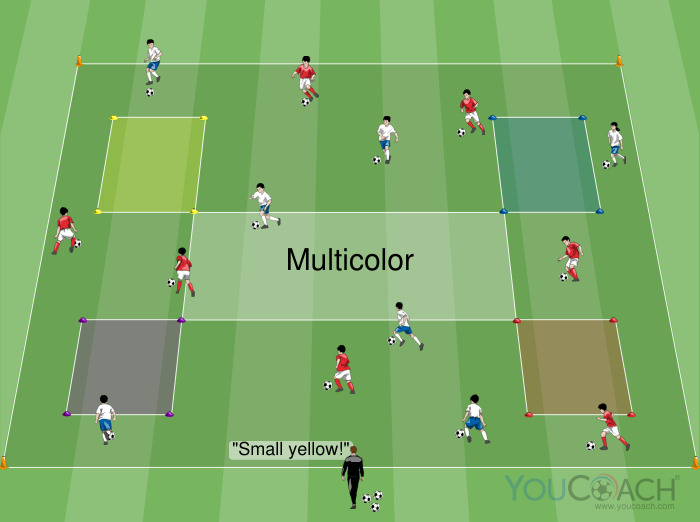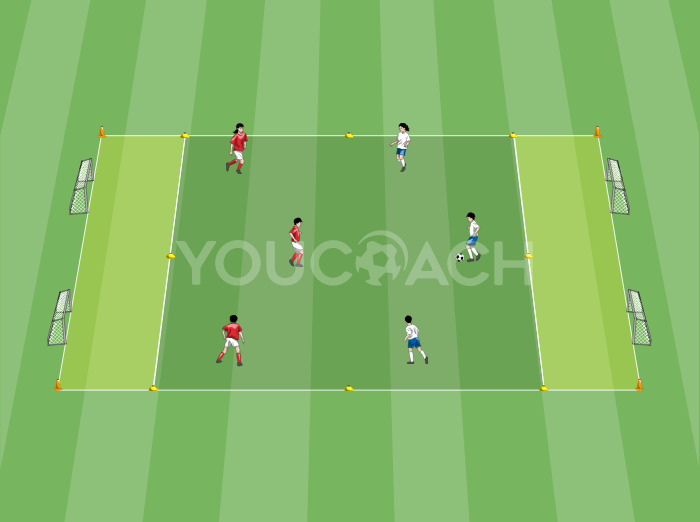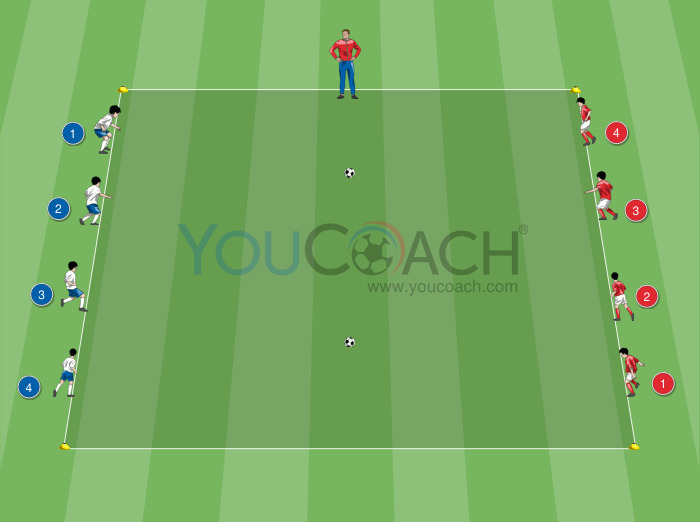Attacking phase, goal after supporting pass
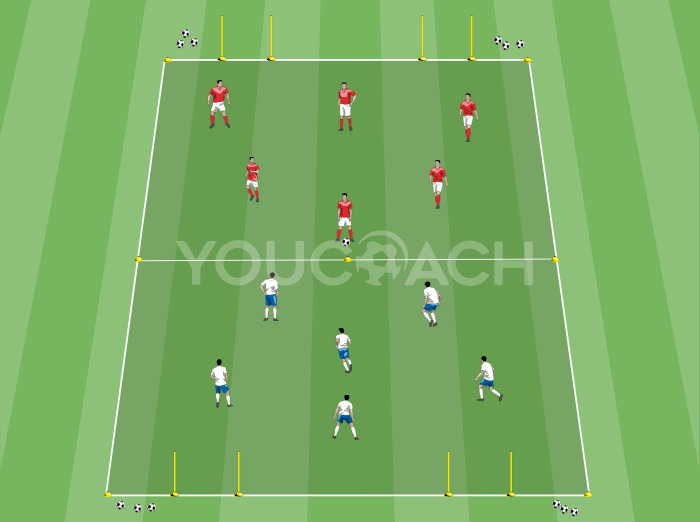
- Balls
- Markers
- 8 poles
- 6 vests
- Playing Area: 30x40 meters / 33x44 yds
- Players: 12+
- Duration: 20 minutes
- Series: 2 of 8 minutes each with 2 minutes of recovery
| Summary | Secondary Objectives |
|---|---|
|
Thematic match ending with a pass to bring in a teammate for support |
Pass, First touch, Feints and tricks, Losing your marker, Intercepting, Tackling, Mobility, Combination play for scoring, Bouncer, Collaboration, Transitions |
Use markers to mark out a small playing field of 40x30 meters/ 44x33 yards. Again using markers, divide the field into two equal halves. Place two goals (formed by two pairs of posts) approximately 1.5 meters wide on both end lines, about 10 meters/11 yards apart. Two teams of six or seven players take their positions on the field (white players against red players in the picture). Place balls behind the goals to restart play quickly.
- A 6 v 6 game is played with the aim of scoring in one of the two opposing goals
- The goal is only valid after the player who makes the assist gains depth and positions themselves beyond the opponent's end line
- The player who receives the assist can score in either goal

- Goal is valid:
- after an assist by a player positioned beyond the opponent's end line
- if the entire attacking team is in the opponent's half of the field
- Vary the size of the playing field and the number of players participating in the game
- Introduce a neutral player who plays with whoever has possession of the ball (numerical superiority)
- Limit the number of touches
- Players' movements to receive the ball must be timed correctly, especially when supporting the teammate for the goal
- Observe the movement of players who are available to receive the ball and score a goal
- Encourage players to move without the ball to create more options and passing lanes for the ball carrier
- Encourage players to move the ball quickly
- Encourage defenders to press for ball recovery and immediate counterattacks in depth with quick restarts (transitions)



